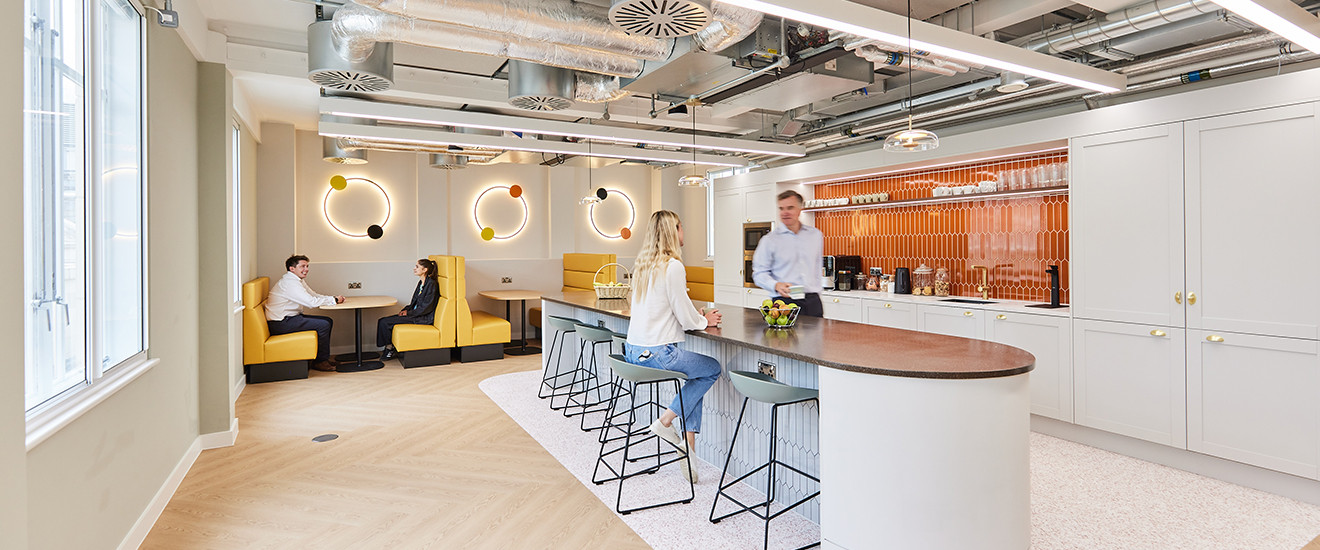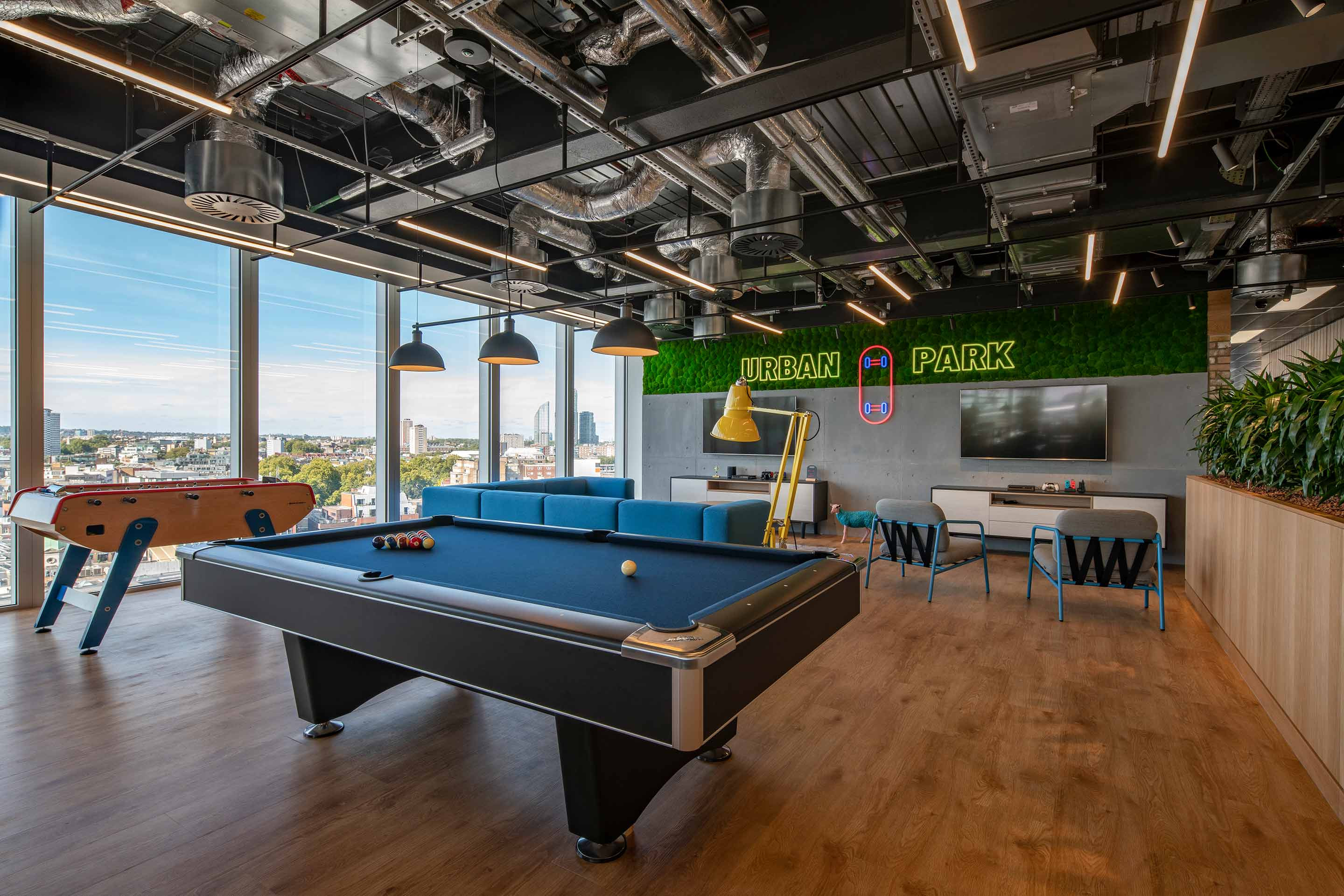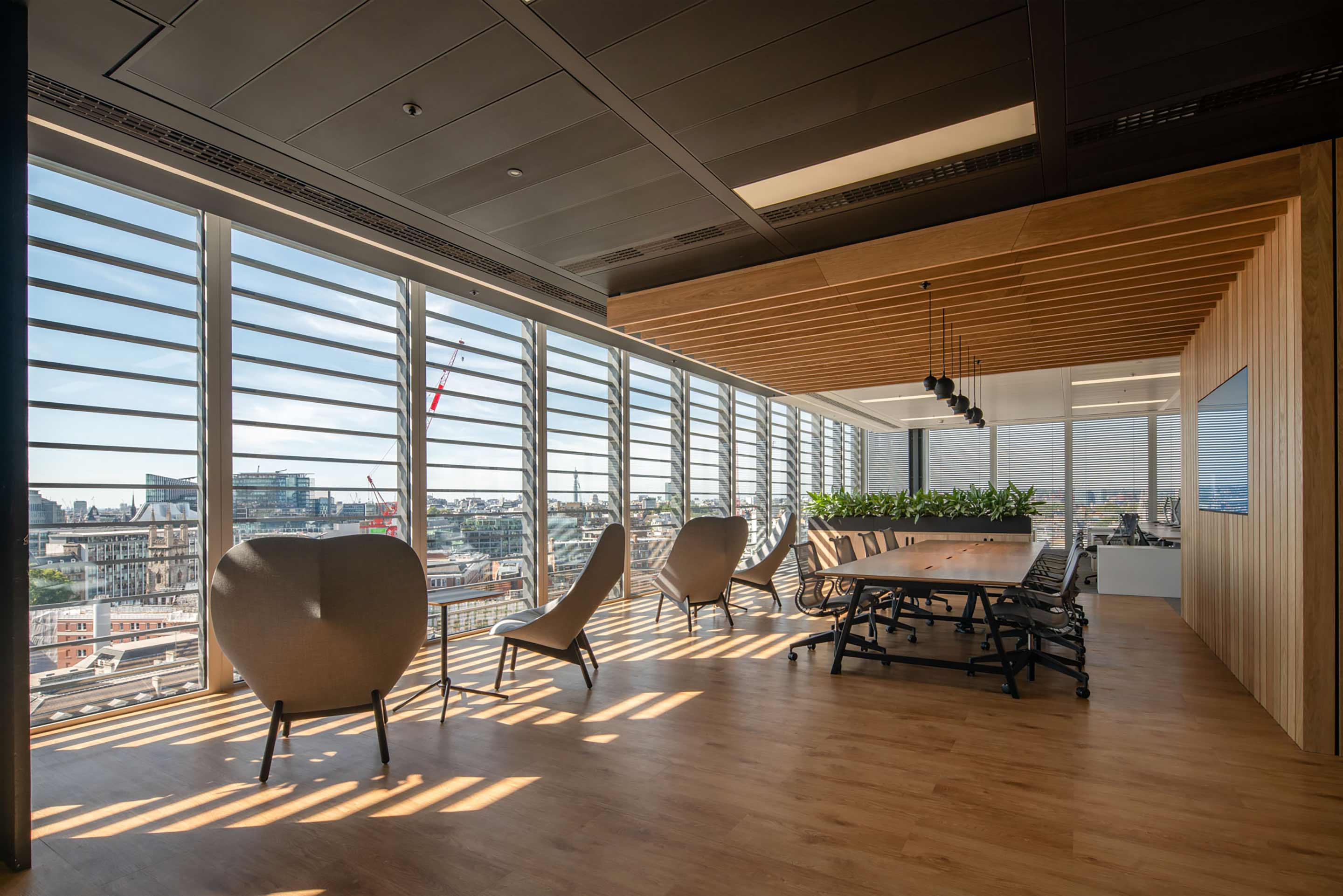Human behaviour sits at the heart of workplace design
Here's how the Five Work Modes - Focus, Collaborate, Learn, Socialise and Rest - can help you to understand how we work and distinguish how to design for your employee needs.

Creating an office environment that supports different ways of working is paramount for businesses today. One way to understand, compartmentalise and distinguish how we work is by exploring the concept of the Five Work Modes. These modes – Focus, Collaborate, Rest, Socialise and Learn – are underpinned by different types of human behaviour. Understanding what drives human behaviour can help businesses to support and provide employees working in the knowledge-economy with dedicated spaces designed to cater to their specific work needs throughout the day.
Where did the study of organisational behaviour come from?
Whilst it’s challenging to attribute the origin of the Five Work Modes to a single individual, it is clear they have emerged as a result of collective insights and changing workplace dynamics. The concept has evolved over time, and is heavily influenced by various disciplines such as psychology, neuroscience and organisational behaviour. Put most simply, researchers and workplace experts, like Ikujiro Nonaka and Hirotaka Takeuchi, have proven that different work tasks require different types of work environments.
Nonaka and Takeuchi believed that this theory could drive innovation in business and created four activity-based working styles – Focus, Collaborate, Learn and Socialise. Thought leaders have popularised the concept in business over the years, like author Cal Newport, who advocated for minimising distraction and creating dedicated spaces for undisturbed focus. As the world of work has continued to develop and innovate, Rest has more recently been recognised as a vital component to stimulate creativity and enhance productivity, thus completing the Five Work Modes as we know today.
How are the Five Work Modes disrupting the workplace?
When we look back on the history of office design, it took the advent of technology in the workplace to force companies to look at office design in a more holistic, human-centred manner. As technology developed, workers became more mobile thanks to digital connectivity. Consequently, we saw the introduction of agile working and activity-based working – in some ways, we can interpret the Five Work Modes as an extension and evolution of this thinking, a further catalyst for change in workplace design.
By introducing dedicated spaces for different ‘work modes’, employers can provide individuals and teams with environments that are better suited to the varying natures of work and preferences in working style. Giving your people the power to choose or customise their environment has shown to enhance productivity, engagement, and overall job satisfaction.
How can we implement the Five Work Modes in office interior design?
To implement the Five Work Modes through office interior design, there are a number of things you’ll need to consider; What kind of work will your employees be carrying out? What kind of spaces, equipment and tools will they need to do their best work? How do you want your team to experience the space, and what subsequent culture do you want to form from this?
Here’s how all of this could come to life in a commercial office:
Focus
Creating dedicated focus zones is crucial for deep work and concentration. These areas could take form as soundproof booths or private pods, offering employees a quiet space to work on complex tasks, eliminating distraction and maintaining high levels of productivity.
As a leader in the fintech space that operates on a highly competitive global trade market, XTX Markets needed different types of spaces for a variety of working styles. Its pioneering HQ, situated at the R7 building in King’s Cross, features plenty of focus areas including single-person pods and smaller rooms. These areas provide refuge from a bustling central office.
Benefits of Focus Spaces
- Provides private spaces for sensitive meetings
- Distraction-free
- Helps with concentration and comfort during deep work
- Provides a place to focus for individuals who don’t have dedicated focus space at home
- Supportive to neurodivergent employees


Collaborate
Collaboration zones are designed to encourage people to come together to brainstorm and share ideas. Open-plan areas with moveable or adjustable furniture, writeable walls and comfortable, less formal seating options facilitate spontaneous discussions and promote a social, learning-based and collaborative culture.
Victorinox, the globally renowned maker of the original Swiss Army Knife™, needed a London HQ that fused collaboration into the very fibre of the design. The space features plenty of space for teams to put their heads together in an effortlessly personalised setting.
Benefits of Collaboration Spaces
- Flexible environment, adaptable to a group’s needs
- Helps to facilitate informal conversations
- Promotes a more fluid, integrated culture
- Frees up individual meeting rooms for formal discussions


Learn
Incorporating spaces for learning and development is essential not just for employees’ professional growth, but for business growth and agility too. Designing dedicated training rooms or flexible spaces equipped with interactive technology can enable a business to facilitate workshops, seminars and training sessions more often, without the need to rely on external speakers. These spaces can also help a team to adopt and emphasise a learning mindset, making it easy to share knowledge.
Sopra Steria’s workspace embodies total adaptability. With spaces that can be modified for seminars and training, as well as impromptu or smaller knowledge-sharing sessions, these spaces equip the user for an always-on learning culture in a variety of settings.
Benefits of Learning Spaces
- Promotes both passive and active learning at work
- Makes knowledge-sharing and upskilling accessible and easy
- Nurtures a learning-minded culture both within and between teams

Socialise
Areas for socialising provide an opportunity for employees to connect, relax and build relationships outside of a more formal work setting. You can create these moments of connection in communal zones, like breakout areas, tea points, soft-seating and lunch areas or within recreational spaces for games or physical activity like yoga. Not only does this promote workplace wellbeing, but it helps to foster community and culture.
The Trade Desk believes that a business is nothing without its people, and decided to partner with a company that shared this belief to create a people-centric, connection focused workplace that added value to the everyday lives of its people.
From pool and foosball tables to sundrenched social areas, this workspace has no shortage of places to authentically connect with colleagues. Complete with a large outdoor terrace with spectacular views of London, The Trade Desk’s new space isn’t far removed from the many social hubs, hotels and drinks terraces you’ll find across the City – a true destination workplace with a hospitality look and feel.
Benefits of Socialisation Spaces
- Helps teams and individuals to connect on a deeper level and feel like part of a community
- Improves employees’ overall workplace experience
- Encourages teams to take time out from work
- Creates a space that feels friendly and welcoming



Rest
Rest areas are designed to help employees recharge and rejuvenate. Creating comfortable and inviting spaces with relaxation features such as comfortable seating, natural light, and soothing colours can improve wellbeing, reduce stress, and help to boost productivity.
Totaljobs’ Portsmouth home provides the perfect space to relax. Looking out over the lakeside, employees can take in the view and take time to reflect, relax and decompress. It facilitates deeper connection, for colleagues to form friendships, or steal a moment for yourself to recalibrate.
Benefits of Rest Spaces
- Gives employees a dedicated space to reflect on – or switch off from – their work
- Improves overall wellbeing and proves your commitment to your people
- Builds acceptable, trust and loyalty
- Enhances the wider workplace experience

Looking at office interior design through the lens of the Five Work Modes offers a new perspective on how organisations can align the physical environment with employees’ diverse needs. Whilst we’ve outlined just some of the ways you can design for and benefit from these different work modes – Focus, Collaborate, Rest, Socialise and Learn – it is clear that this approach inherently designs for difference and inclusion. Designing fluid and flexible spaces will ultimately enable a spectrum of human behaviours to co-exist and sit right at the heart of your workplace.

Start your workplace transformation today.
Your workplace holds enormous potential to improve your business performance. Get in touch today, and we will unlock that potential together.
